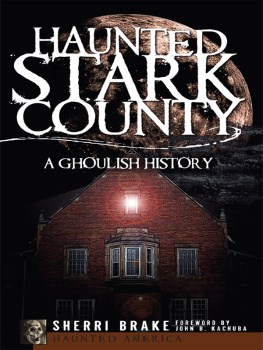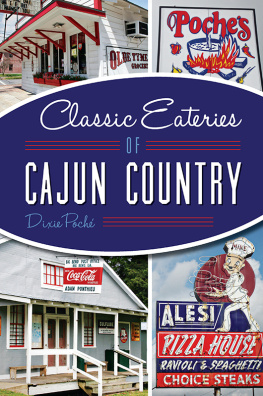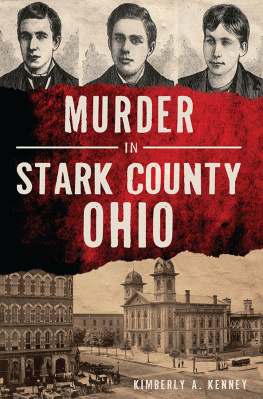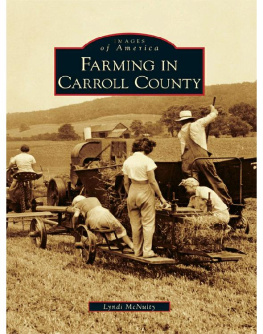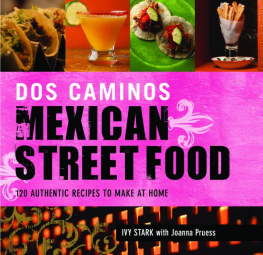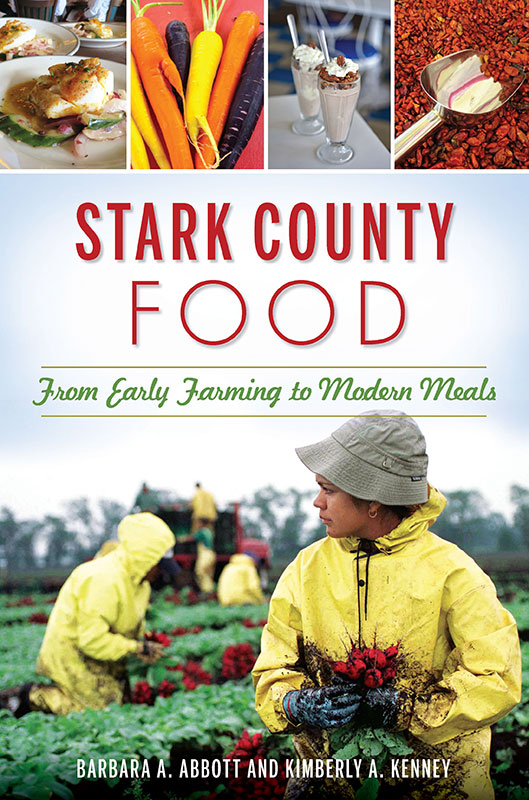

Published by American Palate
A Division of The History Press
Charleston, SC
www.historypress.com
Copyright 2019 by Kimberly A. Kenney and Barbara A. Abbott
All rights reserved
Images courtesy of McKinley Presidential Library & Museum unless otherwise noted.
First published 2019
E-Book edition 2019
ISBN 978.1.43966.639.5
Library of Congress Control Number: 2018963530
Print edition ISBN 978.1.46713.896.3
Notice: The information in this book is true and complete to the best of our knowledge. It is offered without guarantee on the part of the authors or The History Press. The authors and The History Press disclaim all liability in connection with the use of this book.
All rights reserved. No part of this book may be reproduced or transmitted in any form whatsoever without prior written permission from the publisher except in the case of brief quotations embodied in critical articles and reviews.
CONTENTS
ACKNOWLEDGEMENTS
My two great loves are food and history, which this book combines beautifully. Simply put, it has been a joy to work on. There are so many interesting ways to look at food, and we tried to cover every angle. I enjoyed diving deep to find any reference to food available and combing through files in the Ramsayer Research Library at the McKinley Presidential Library & Museum. There is no doubt more to be discovered, but thats what makes history so much fun!
Some of my most cherished childhood memories revolve around food. Although I am not Italian, I grew up in Rome, New York, where everyone was Italian. My grandmother made spaghetti sauce every single Saturday night, and our entire family would gather around a rather small kitchen table to feast until our bellies were full. Years later, I would take detailed notes as I watched my mom make my grandmothers sauce because, of course, there was no recipe. I still use the same splattered scrap of paper today just to be sure I get it right. We also had elaborate Sunday dinners after church each week that would almost rival Thanksgiving. During the week, my grandmother would magically transform the leftovers into something completely different. When I moved into my first apartment, I could not boil water. But my mom said, You like to eat, so youll learn to cook. And I did. I just used Campbells Soup recipes at first, but slowly I came into my own. Today, Im an accomplished cook who actually enjoys grocery shopping and spending time in my kitchen.
I would like to thank my friend and co-author Barb Abbott for suggesting that we work on this project together. Our areas of expertise fit together like yin and yang, which I think has produced an amazing story. Thank you to everyone who loaned photographs, cookbooks, menus and recipe cards for this project. On a personal note, I would like to thank my amazing family for their support in all of my endeavors: my grandmother Marjorie Vanderhoof; my mother, Cheryl Beach; my sister, Kristen Merrill; and my husband, Christopher Kenney. You are the best team of cheerleaders anyone could ask for!
KIMBERLY KENNEY
_______________________________________________
I thought I knew quite a bit about Stark County food. Owning a culinary tourism business affords me the opportunity to connect with growers, bakers, restaurateurs and people who love to eat! Culinary tourism connects people to community through food, but it wasnt until engaging in research for this book that I realized how food is so entwined in our regions history and economic development.
I would like to thank the many business owners who took time out of their hectic schedules to afford me an interview. These took place in various settings, from fancy corporate offices to home kitchen tables, replete at times with playful cats, patient dogs and, in one case, endless servings of homemade pizzelles and hot tea.
Special thanks to my friend and co-author Kim Kenney, who worked diligently on this project even while undergoing radiation for breast cancer. She showed tenacity, kept positive and not once did she say, I cant work on this right now. Kim is a superb scholar and writer. I am grateful for the opportunity to work with her and, most of all, happy to report that Kims cancer is in full remission.
I dedicate this publication to my late parents, Marge and Claude Fiocca. My mom instilled in me a love of cooking and baking, and some of my fondest memories include clouds of flour and bouts of laughter during marathon holiday baking sessions. Like Kim, I also grew up in an Italian neighborhood, North Hill, in Akron. My sister and I regularly feasted on bowls of pasta at various Italian social clubs and enjoyed pizza in between games of bocce ball at the Carovillese Club. My dad loved books and was an avid reader, as I am today. He also taught me to give back to the community. He was well known in Akron for his genial personality and generosity. One of my earliest childhood memories was helping out in soup kitchens. Family, food and communitytimeless pillars that form essential stories in this book. Enjoy!
BARBARA ABBOTT
INTRODUCTION
Everyone has to eat. Its the one thing that every human being on the planet has in common. Whether youre an accomplished home cook or a regular at one of Stark Countys many restaurants, there is something that makes your mouth water and your pulse quicken just before you taste it. Maybe its the chicken potpie your mom made for dinner on cold winter nights. Or perhaps its a perfectly cooked steak from Bakers Caf that melts in your mouth. Or it might be frozen custard from the stand at Meyers Lake. The memories stay with you for decades and serve to transport you back in time the next time you take that bite.
In spite of the fact that every single one of us has to eat, tracking down the history of the local food scene is difficult. Food is rarely studied, and what we eat is not usually recorded, so the historical record is sparse. You have to dig deep to find obscure references to food that are often hidden in letters, journals and advertisements in newspapers, yearbooks and event programs. Many of the obvious resources, such as restaurant and school lunch menus, are ephemeral. Who saves your childs school lunch menu once the week or month has passed? How many of us leave a restaurant with a menu in our hands?
Long ago, people were far more involved in their own food production than we are now. The pioneers who settled the region that would become Stark County had to rely on themselves to survive, which meant clearing the land, planting crops and trading with neighbors to put food on the table. Well into the twentieth century, many homeowners grew a garden and canned its bounty to last through the winter months. Veterans of the Revolutionary War who were given land grants settled much of Ohio, while areas such as Stark County were plotted out by industrious surveyors. As pioneers moved from the East Coast inland, most kept the eating habits adopted by their forefathers. Cooking was done in iron pots over an open hearth. Hunting brought meat to the table. Baking was done once a week, typically cookies and bread first, followed by cakes and pies. Almost every farm had a bean separator, since beans were a major ingredient in the farm diet. This hand-made machine, which threshed beans, could be operated by dog power. Other items found in early Ohio kitchens included sausage stuffers and a lard press.
Many settlers brought their native customs and cuisines to Ohio. The transplanted New Englanders brought recipes for baked beans with salt pork and molasses, dumplings made with sour milk and chicken potpie. Some of these early settlers used bread stuffing for pork and beef, mainly to stretch a meal. The Germans brought their love of sausages, sauerkraut and hearty meat-and-potato meals. Czech immigrants brought one of their favorite dishes: fish boiled with spices and served with a black sauce of prunes, raisins and almonds. All of these traditions would lay the foundation for what Stark County residents eat today.
Next page

